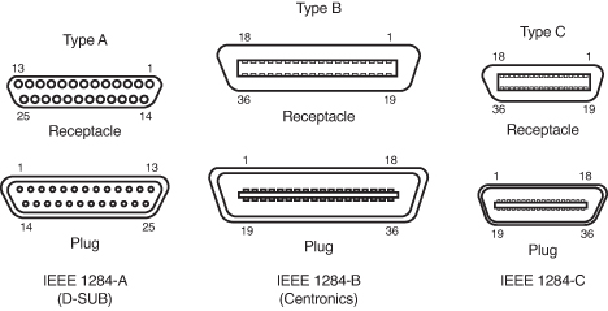Hardware Reference
In-Depth Information
The IEEE 1284 specification is targeted at standardizing the behavior between a PC and
an attached device, specifically attached printers. However, the specification is of interest
to vendors of parallel port peripherals (removable-media drives, scanners, and so on).
IEEE 1284 pertains only to hardware and line control and does not define how software
talks to the port. An offshoot of the original 1284 standard has been created to define
the software interface. The IEEE 1284.3 committee was formed to develop a standard for
software that is used with IEEE 1284-compliant hardware. This standard contains a spe-
cification for supporting EPP (Enhanced Parallel Port) mode via the system BIOS.
IEEE 1284 enables higher throughput in a connection between a computer and a printer
or between two computers. The result is that the printer cable is no longer the standard
printer cable. The IEEE 1284 printer cable uses twisted-pair technology, which results in
a much more reliable and error-free connection.
TheIEEE1284standardalsodefinestheparallelportconnectors,includingthetwopreex-
isting types (Type A and Type B) and an additional high-density Type C connector. Type
A refers to the standard DB25 connector used on most PC systems for parallel port con-
nections, whereas Type B refers to the standard 36-pin Centronics-style connector found
on printers. Type C is a high-density 36-pin connector that can be found on some printers.
Mostparallel portsusethestandard TypeAreceptacle. Thethree connectors areshownin
Figure 14.25
The three types of IEEE 1284 parallel port connectors.
The IEEE 1284 parallel port standard defines five port-operating modes, emphasizing the
higher-speed EPP and ECP modes. Some of the modes are input only, whereas others are
output only. These five modes combine to create four types of ports, as shown in
Table

